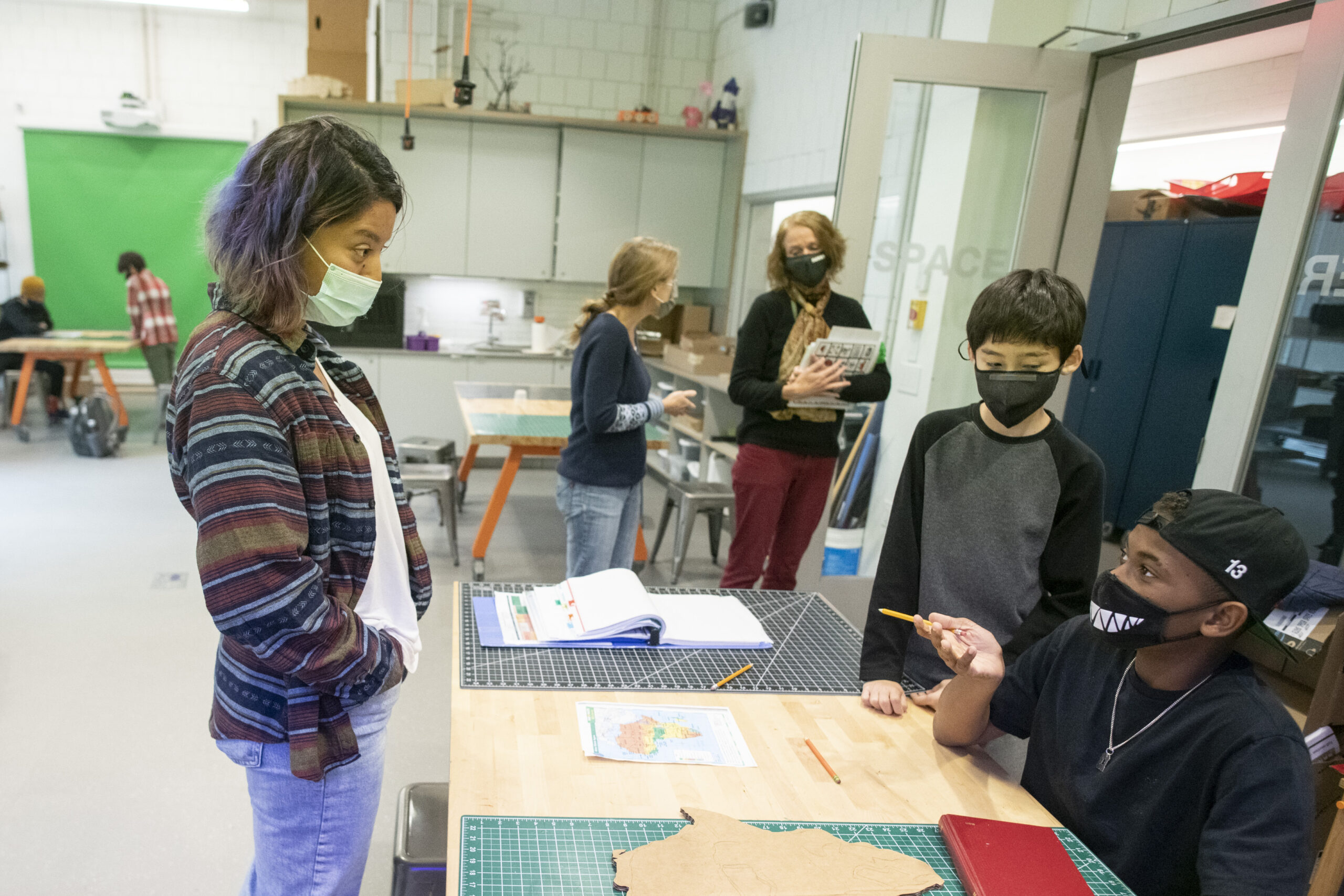
“Having multipurpose spaces where students can engage in work where others can see the changes and adaptations over time allows students a view into the making/design process. The perspective gained can be very inspiring to students as it makes thinking visible—and shares that thinking across the community.”
—Folashadé Solomon
Shadé Solomon believes that STEM and STEAM education challenge students to embrace interdisciplinary thinking which helps to address the complexities of our 21st century world. “STEM ensures that students think about science, math, and art not just as academic disciplines, but as meaningful tools for addressing real life issues.” Taking these disciplines out of their separate silos, we can see how they inform each other.
Connecting art and science, in particular, creates rich opportunities for creative problem solving. The art classroom is a place where students feel free to experiment, and create, and Shadé observes that while experiments in a typical science classroom traditionally feel more predetermined, aimed at reaching a specific result, “the creative process for scientists is really so much more open.” Reminding us that scientists, like Leonardo da Vinci, have often been artists as well, she says, “Accessing the wonder that comes from creative exploration becomes so much more accessible when you think about the connections between art and science.”
The design of the new spaces itself, with so much natural light, fuels inspiration. Shadé observes, “If the space is open and light, you feel open to possibilities, unlike in places that feel closed down, physically and emotionally. It’s exciting,” she notes. “We can really inspire and engage students to think expansively and activate their enthusiasm for learning. Spaces that are conducive to this orientation can only be helpful in inspiring our students.”

Folashadé Solomon
Associate Professor of Education, Framingham State University, STEM and interdisciplinary learning educator, and member of the Park Board of Trustees

